Among kyusha wheels, there are a select few that stand apart from others, usually because of unique design or construction. Generally they are the result of new ideas thought to be cutting edge. When time passes and that new idea never catches on, those designs become extra special. The Volk C1 may be THE prime example of this, and that puts it in a special class of Kyusha Shoes.
In the late seventies and early eighties, several small players experimented with plastic and composite auto wheels, but Rays Engineering was the first major manufacturer to actually market and sell one.
Kind of…
I’m not sure we can truly call the C1 a composite wheel. With 3-piece construction, the shell sections were conventional aluminum. The wheel centre used both aluminum and carbon fibre – bonding a simple carbon fibre sheet over cast aluminum.
Aluminum certainly would have provided the majority of the strength, but you must credit Rays for the effort. At the time, carbon fibre was basically reserved for high-end motorsports and the aerospace industry. The way Rays Engineering saw it though, metal was on its way out, and the C1 was heading the future.
The blurb reads…
“Every field, from electronics and information processing to biotechnology, is advancing at almost unbelievable rates. It’s only natural that the automobile industry, representing as it does a concentration of industrial technologies, should have its share of breakthroughs. Twin cams, turbo intercoolers, midship, and mechanisms that were once found only in racing cars are now on the spec sheets of ordinary family cars. In the midst of all this activity and competition, Rays Engineering has taken the time to exam the cars we drive from every aspect, including basic wheel construction. Our policy is “Consideration of the whole car, with an emphasis on competitiveness.” Advanced functions eliminate unnecessary ornamentation, and the potential for increasingly advanced functions is limitless. Aluminum and magnesium are already out-of-date as materials become more sophisticated, and the car of the Future must make use of these new materials. Keeping this in mind, Rays Engineering presents its aluminum/carbon composite material. State-of-the-art technology and the superb craftsmanship of our artisan spirit now brings the research and performance of racing cars to the streets.”
Rays Engineering was quite proud of the C1… and also of this somewhat wordy blurb they crafted. It appeared in large-scale on the wheel box, in the small manual/pamphlet that came with the wheels, and even on the wheels themselves.
Wait. “This aluminum wheel…” I smell a contradiction.
I guess even Rays realized that this wasn’t quite a real composite wheel. Still, I’m not sure there is any other wheel like the C1 period… never mind ones on “Racing Cars.”
Rays used little spaces on the wheel front and back to broadcast its pride in the C1. Phrases like “CFRP + AL”, “Advanced Technology Design”, and the Rays slogan, “Artisan Spirit, We Are Obstinacy”, are visible on the wheel both front and back. (I’m still not sure how being obstinate is braggable… Japanglish fail?)
And this is there too. “Super Aero Dynamic Wheel.”
You might be wondering to yourself, “how is a flat dish wheel like this aerodynamic?”
The answer is – with a couple of accessories that even today, look like they’d be good props for a sci-fi film.
Yes the C1 truly is a contender for king of Kyusha Shoes.
It’s easy to miss at a glance, but the small holes drilled in the wheel face are not identical on each wheel. A set of four includes two pairs of mirror image wheels – specific left and right sides.
An available “Aero Cap” and “Cooling Fin” ring are also asymmetrical and directional.
The cap, is the simpler of the two pieces: a wide flat cover to replace the standard cap. It barely reaches the vent holes on the wheel face, and covers only the air-tight wheel mounting nuts and hub relief. Given that, and despite good-looking directional cut outs on the caps face, it likely only functions to reduce drag in comparison to the standard cylindrical centrecap,
The larger Cooling Fin ring though may have real aero effects. It claims to provide brake cooling, pulling air from behind the wheel face and under the car outwards to either side of the vehicle.
It does so with aggressively ramped, directional blades on it’s back side that pull air through the narrow gap between the wheel centre section and the outer shells. The piece is quite fantastic looking, both front side and back.
As noted earlier, the C1 wheel debuted in 1985, and available to pair with it, was a carbon fibre steering wheel that carried the same name. Like the wheel, it also had an add-on accessory. The steering wheel got a soft foam centre cover and horn button dubbed a “Safety Pad”.
As you would expect, both items commanded a fair bit of yen relative to other products. Sales may not have met expectation, or other issues may have been realized. It appears that production only lasted for one year. That makes both C1 products an ultra-rare find today. The carbon fibre face of the wheels though, often does not age well, suffering rock chips, cracking and peeling. Finding a set like the one pictured here is a huge challenge. Many thanks to Pontus in Sweden for sharing!
So while the wording claimed that aluminum and magnesium were “out of date”. It didn’t take long at all for Rays Engineering to return to aluminum. Leaving composite behind, they turned focus to new construction and forging techniques for metal wheels. Now, three decades later they have not returned to composite wheels and instead are wildly viewed as the master of aluminum wheel forging. They have left other (probably lesser) wheel builders to experiment with alternate materials.
Perhaps now, some of those other builders think they have composite wheels mastered… maybe sometime in the future someone actually will produce a composite wheel that can compete with aluminum in all regards. In the meantime, I think Rays Volk C1 is as close as we’re going to get… even if it is more than 30 years old.
Again, many thanks to Pontus Ekman of Sweden, for sharing this beautiful set of never mounted C1’s with us! Boxes and all, this is perhaps the most jaw-dropping shoe find we’ve ever seen.


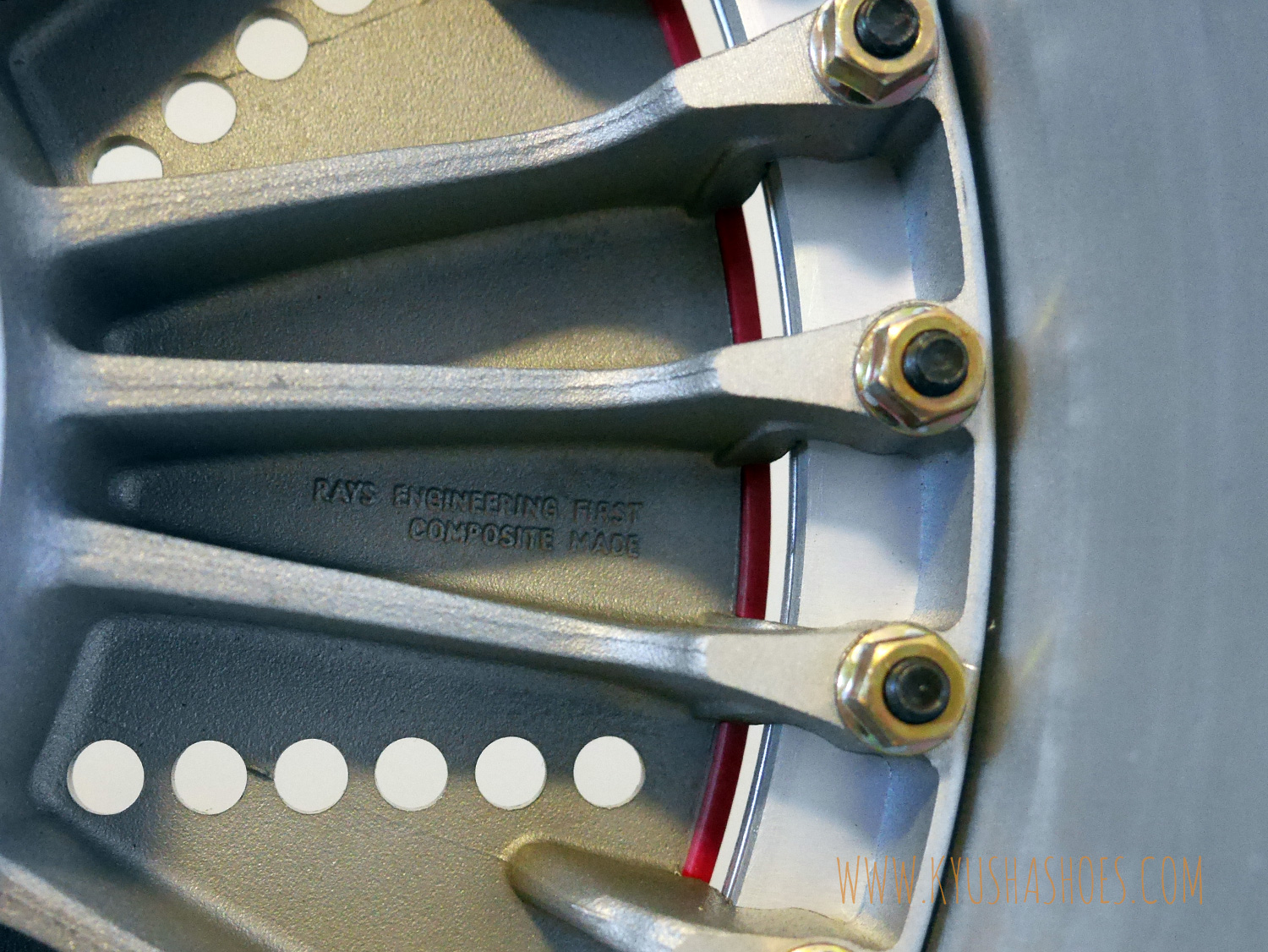
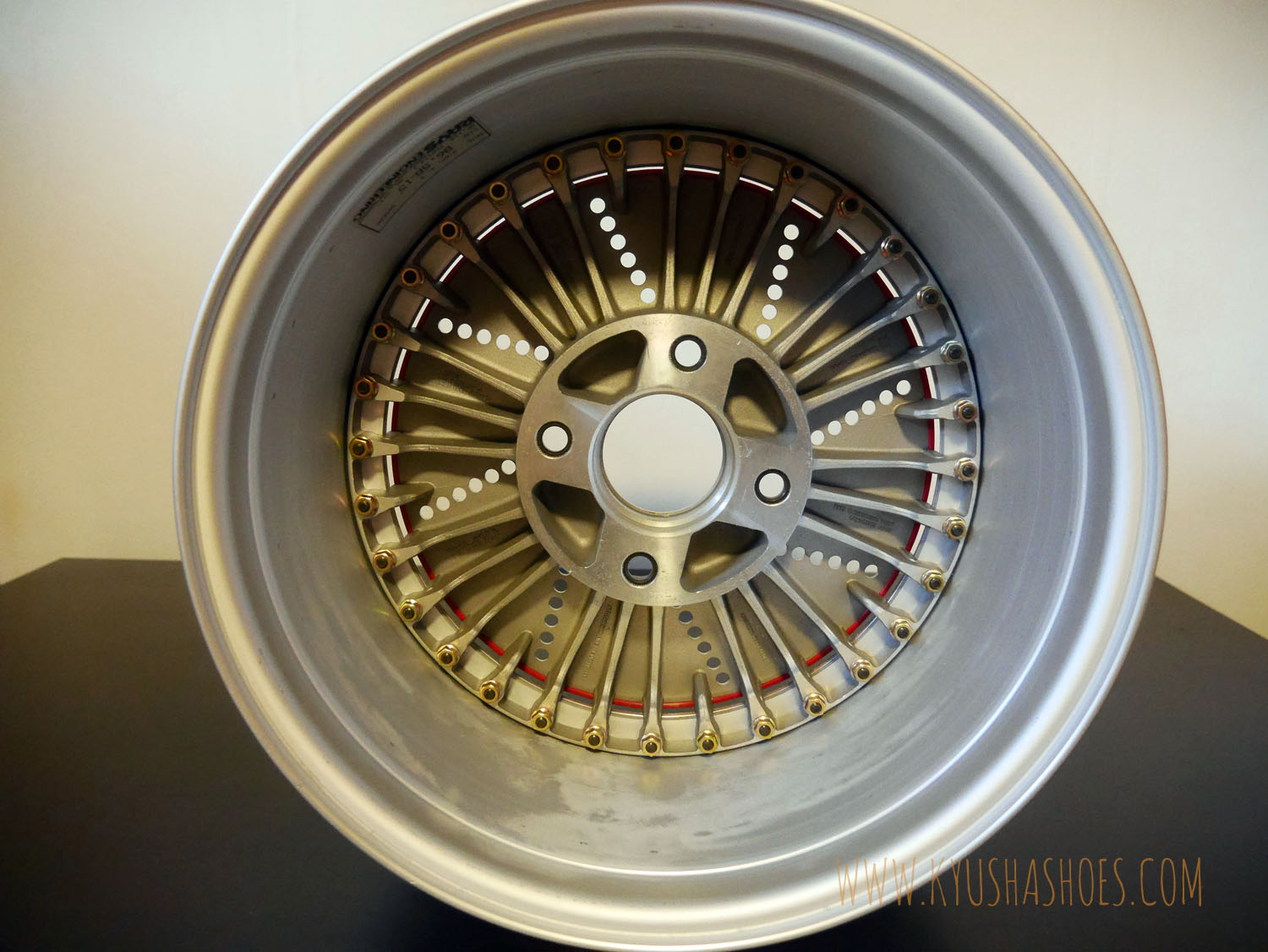



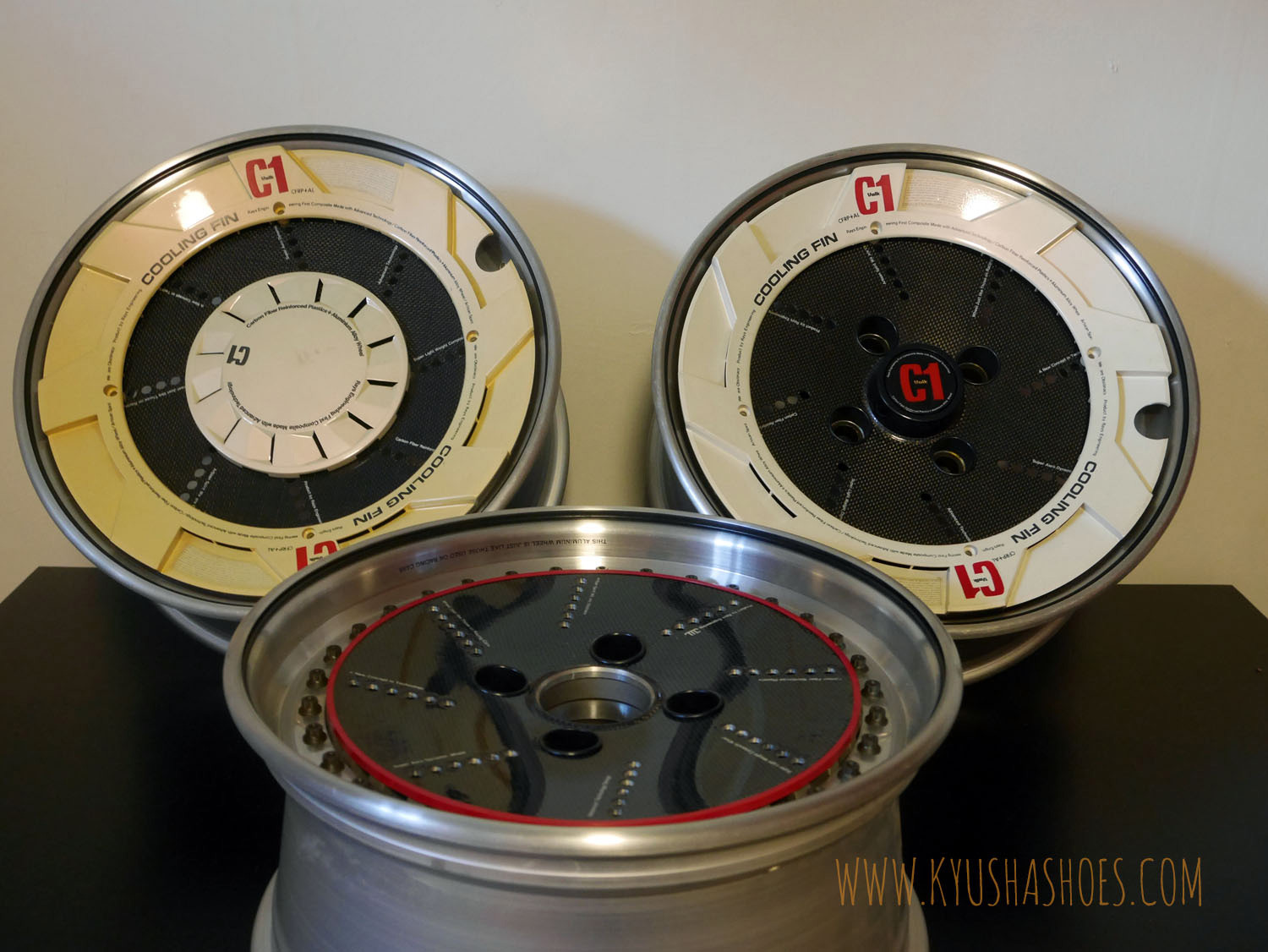

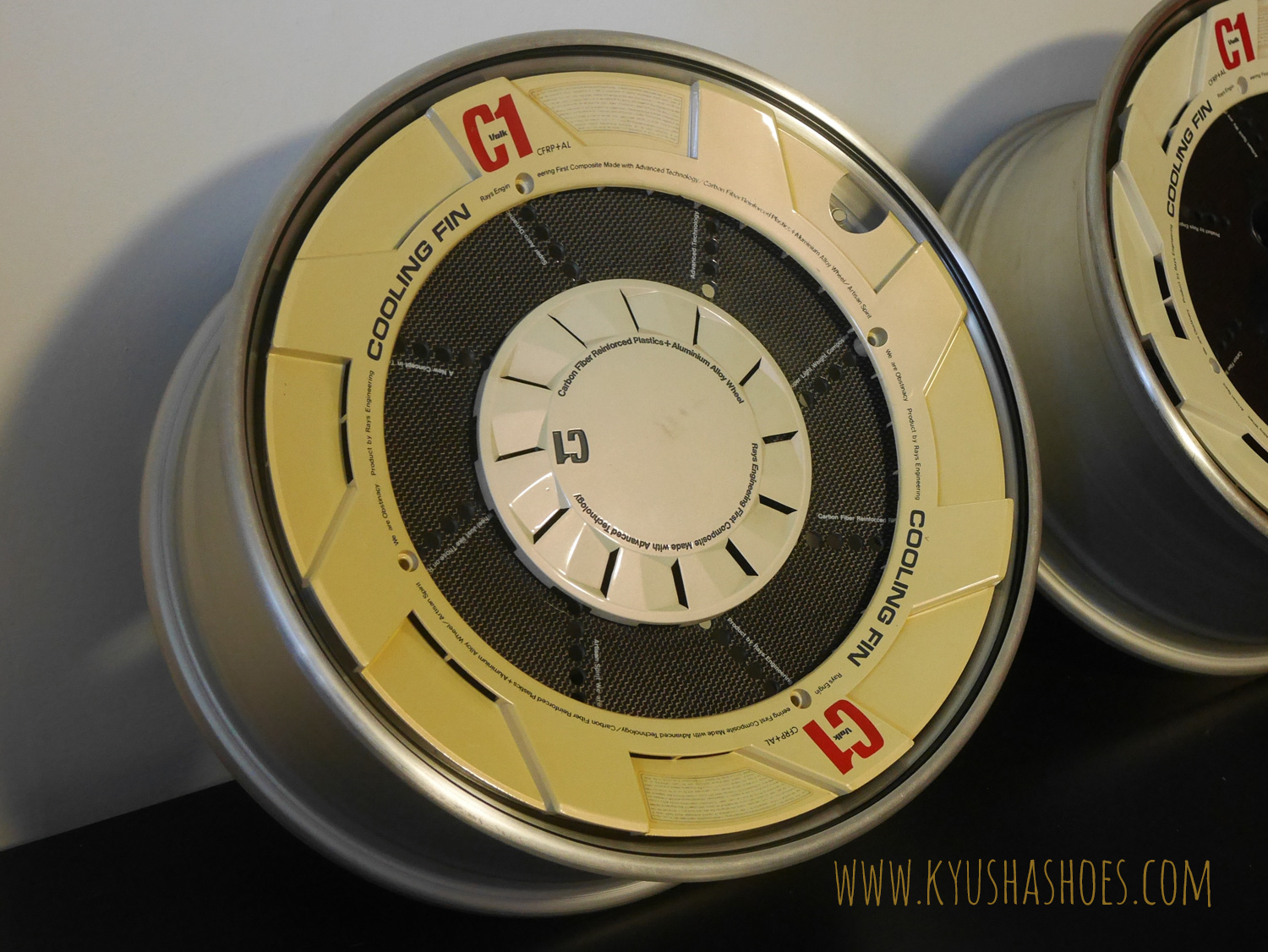
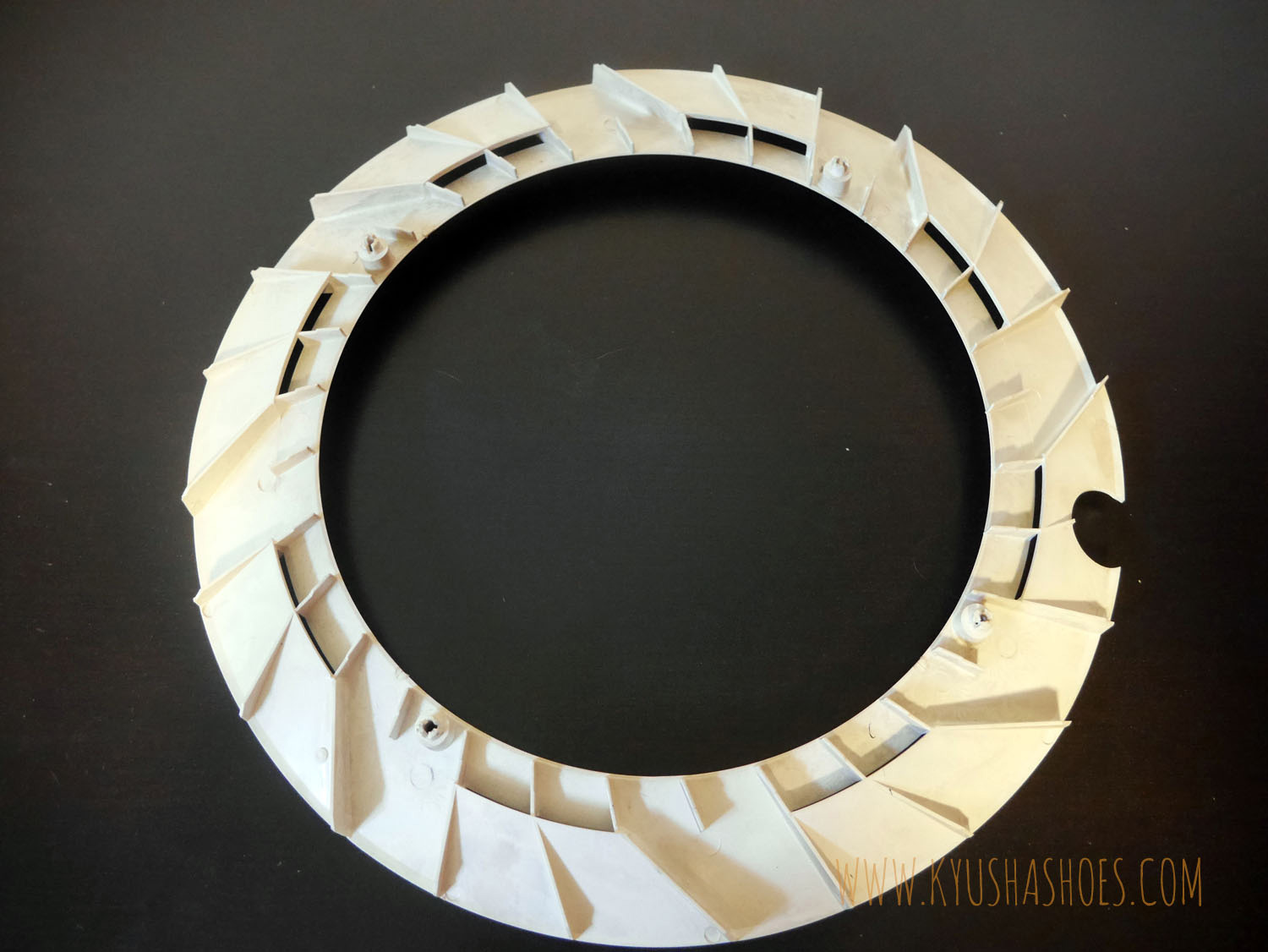
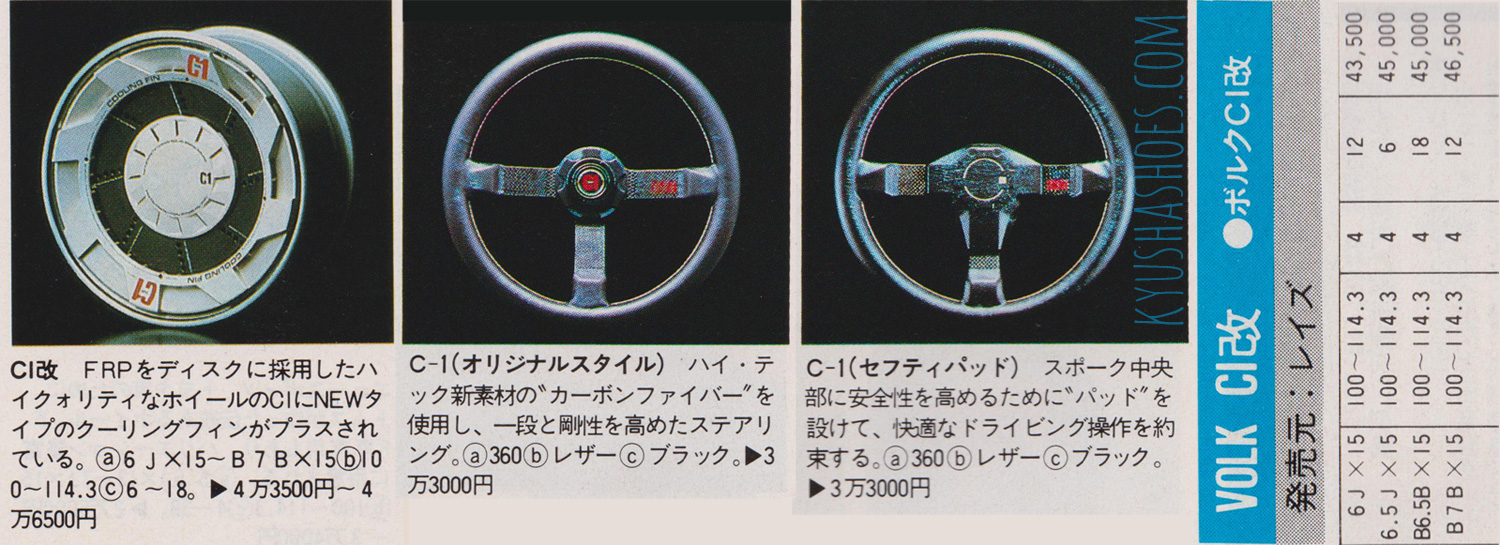

The first production composite wheel as far as I know is on the 1989 Shelby CSX-VNT. It is a Plastic – FiberGlass composite. They were produced on all 500 models of the car. They’re really not the strongest but they look cool. All gold, one-peice 15×7 5×100.
You mean these.
http://www.generationhighoutput.com/wp-content/uploads/2013/03/generation-high-output-shelby-csx-vnt-fiberride-wheel.jpg
I never realized they were composite. Would have been cool if they were asymmetrical as well.
Looking around, I found this quote, “They aren’t that light. I’ve got a couple of them (both cracked). I’ll weigh them if I ever think about it. For drag wheels there are much lighter options, for autocross/road racing I’ve seen first hand a CSX pull the lugnuts right through the wheel in a turn – really tears up alot of parts on a rare car when the wheel comes off at speed in a corner.”
Ain’t no JWL rating on them.